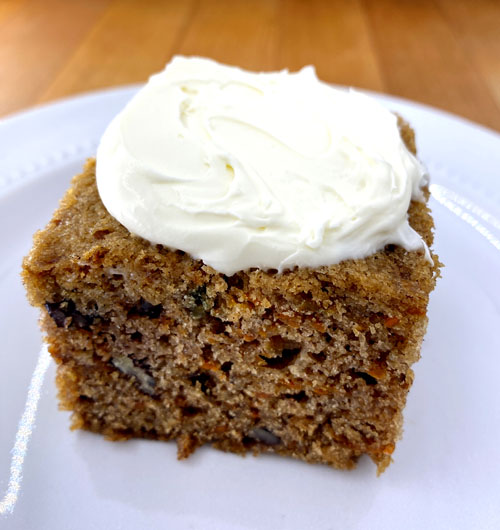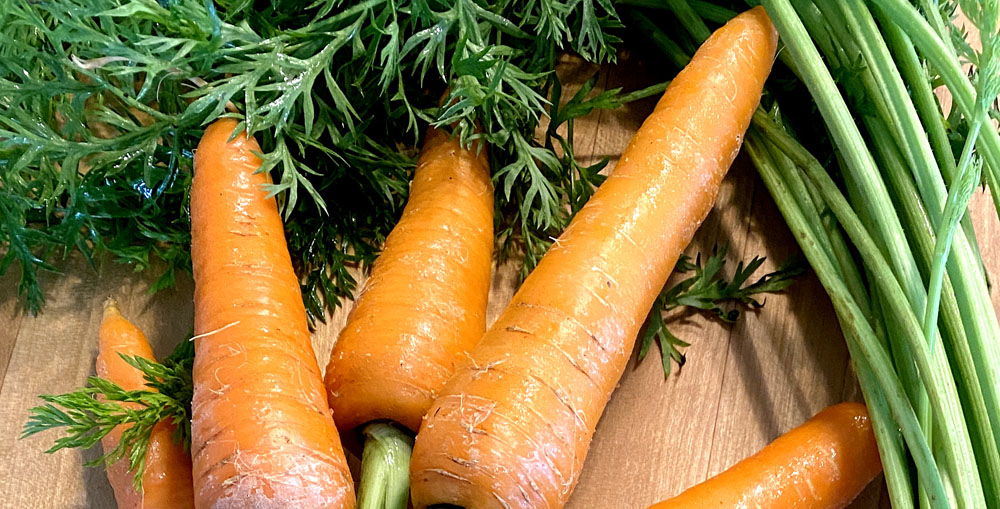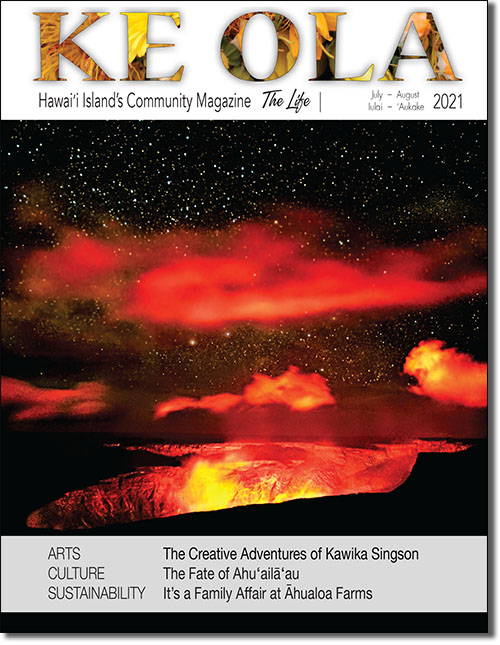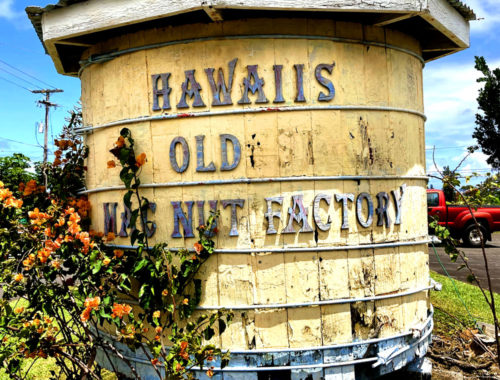
Local Food: Below the Surface, and a Recipe for Carrot Cake

By Brittany P. Anderson
One of the greatest pleasures in life is pulling up a carrot and feeling it release from the ground. Indeed, a lot of faith goes into planting root vegetables because you canʻt quite tell what is held under the dark cover of soil. There is no monitoring for size and ripeness like one can with a tomato. Crooked, intertwined, and stunted carrots all look the same from the surface.
Farmers and home gardeners all over Hawai‘i Island grow exceptional carrots. Their carrots are sweet and with that signature snap when you bite into it. The most successful areas for carrot cultivation on the island are those in cooler climates. They also do well in container gardens; moist yet well-drained soil, free from rocks and clay, is key to straight carrots with good color. They benefit from compost but donʻt let the ground get too warm, or theyʻll be too slow in forming their roots.
Orange is the most common color of carrots today, but the wild carrot is pale white. Sometime around 1,100 years ago, farmers living in present-day Afghanistan took advantage of a mutation in a color gene present in the carrot root. In the process of domesticating the white, wild carrot, they accidentally turned it yellow.
Six hundred years later, the color of carrots took another turn, this time in the Netherlands. The color gene mutated again, this time going from yellow to orange. The Dutch were particularly fond of the now orange carrot, and orange carrots are featured prominently in artwork honoring the Dutch royal family, the House of Orange.
Scientists aren’t sure just how or why the color gene mutated but we sure are glad that it did. Orange carrots contain carotenoids including the powerful beta-carotene, which is converted to vitamin A by the body. The more orange the carrot, the higher amount of beta-carotene is present.
Some wild carrots are still found in nature. However, they donʻt have much of the qualities we associate with a typical carrot. There is a distinct possibility that Hawai‘i has its very own native carrot. The American carrot, Daucus pusillus, is usually considered native to North and South America; however, it is found on the cinder slopes and arid habitats of O‘ahu, Moloka‘i, Lāna‘i, and Hawai‘i Island. The presence of this species of carrot is quite controversial. Some scientists believe Daucus pusillus is a naturalized plant, while others consider it native. Archaeological remains from this wild carrot have been discovered on Mauna Kea that predates Captain Cookʻs arrival. While this variety is far from the fleshy root carrot we know and love, it is yet another mystery in the history of the carrot.
Today, farmers all over Hawai‘i Island grow carrots in a rainbow of colors. Locally grown carrots find themselves in soups, salads, and best of all, in cake. This recipe for carrot cake is pleasantly savory, featuring local spices of ginger, cinnamon, and nutmeg. It can be eaten for breakfast or dessert; it is really that good.
Carrot Cake with Mascarpone Frosting

Ingredients
1 1/2 cups sugar
3 eggs
1 1/3 cup ghee
2 cups flour
2 tsp cinnamon
1/2 tsp powdered ginger
1/4 tsp nutmeg
2 tsp baking soda
1 1/2 tsp kosher salt
1 pound carrots, grated
1 cup chopped nuts (walnuts, pecans, or macadamia nuts)
Frosting
12 ounces mascarpone cheese
1/2 tsp local pure vanilla extract
Method
Preheat oven to 350˚F. Grease an 11×7 baking pan and line with parchment paper. In the bowl of an electric mixer, beat the sugar, ghee, and eggs on medium-high speed for 2 minutes, until light yellow and thickened. Stir in the vanilla. In another bowl, combine the 2 cups of flour, cinnamon, ginger, nutmeg, baking soda, and salt. With the mixer on low, slowly add the dry ingredients to the wet ones. Stir the nuts and grated carrots into the batter with a spatula. Pour the batter into the baking pan. Bake for 30 to 35 minutes until a toothpick comes out clean. Once done, cool the cake in the pan for about 15 minutes. Then, turn the cake out onto a baking rack and cool completely before frosting. For the frosting, add the vanilla extract to the mascarpone and whip together with a fork. Enjoy!



